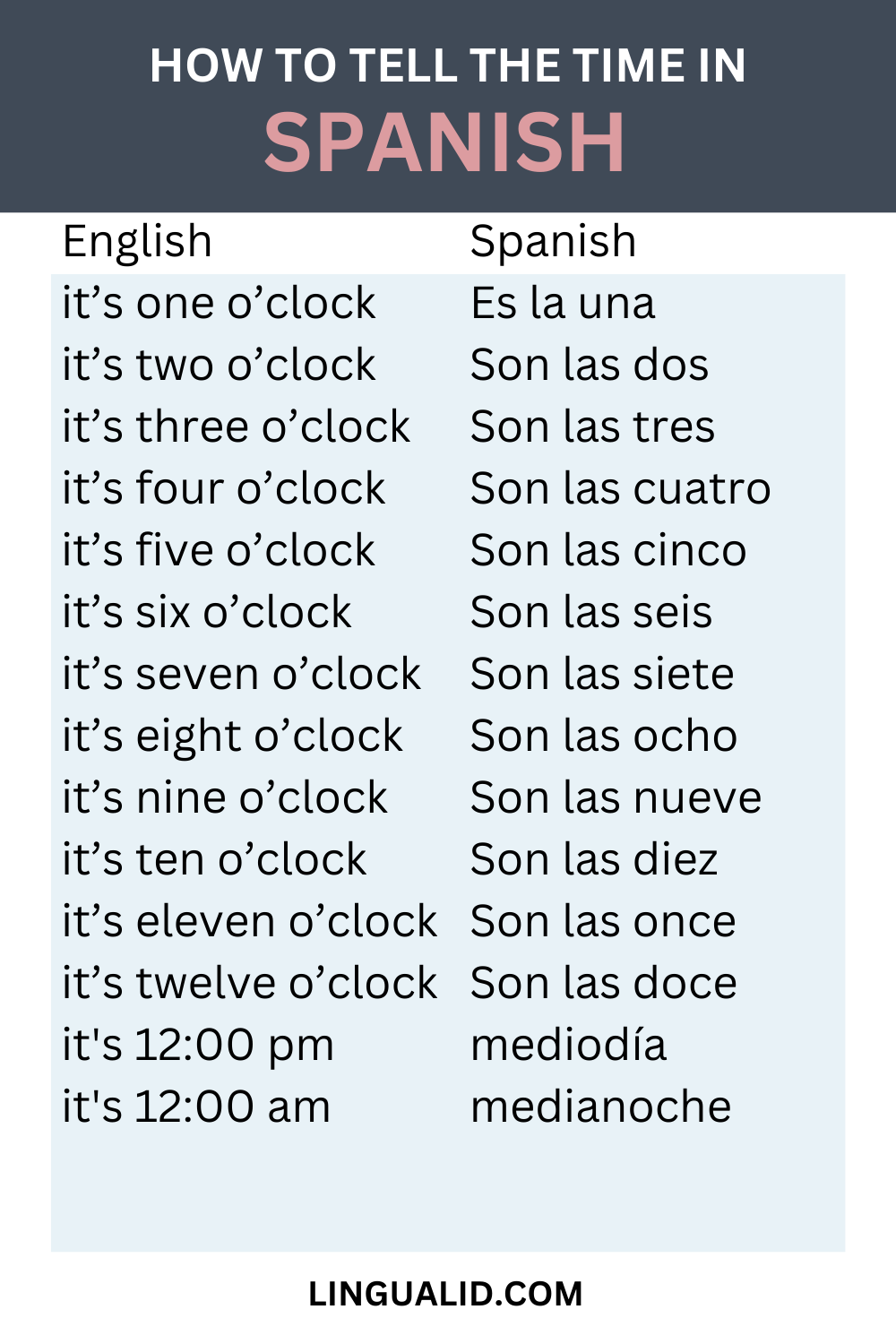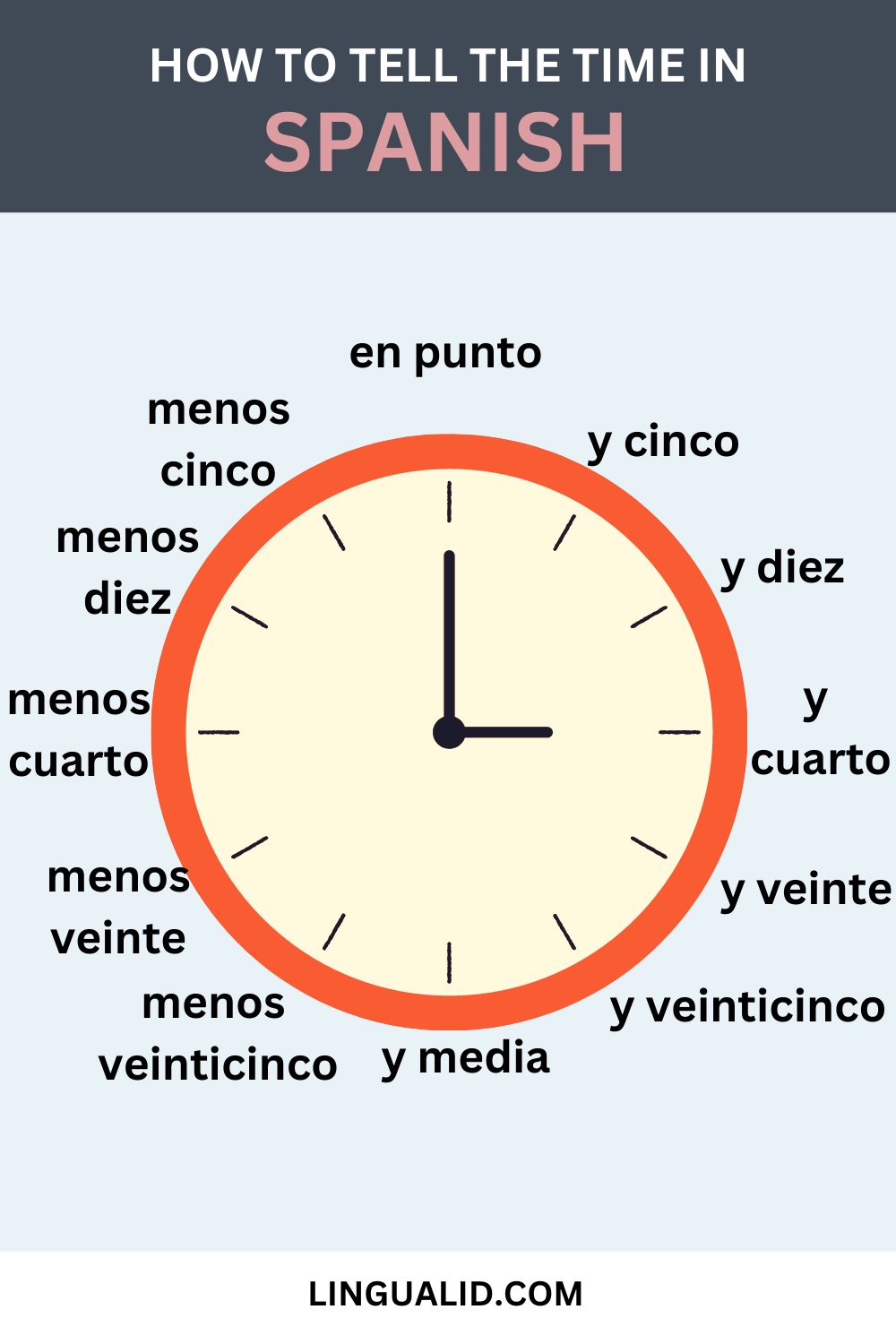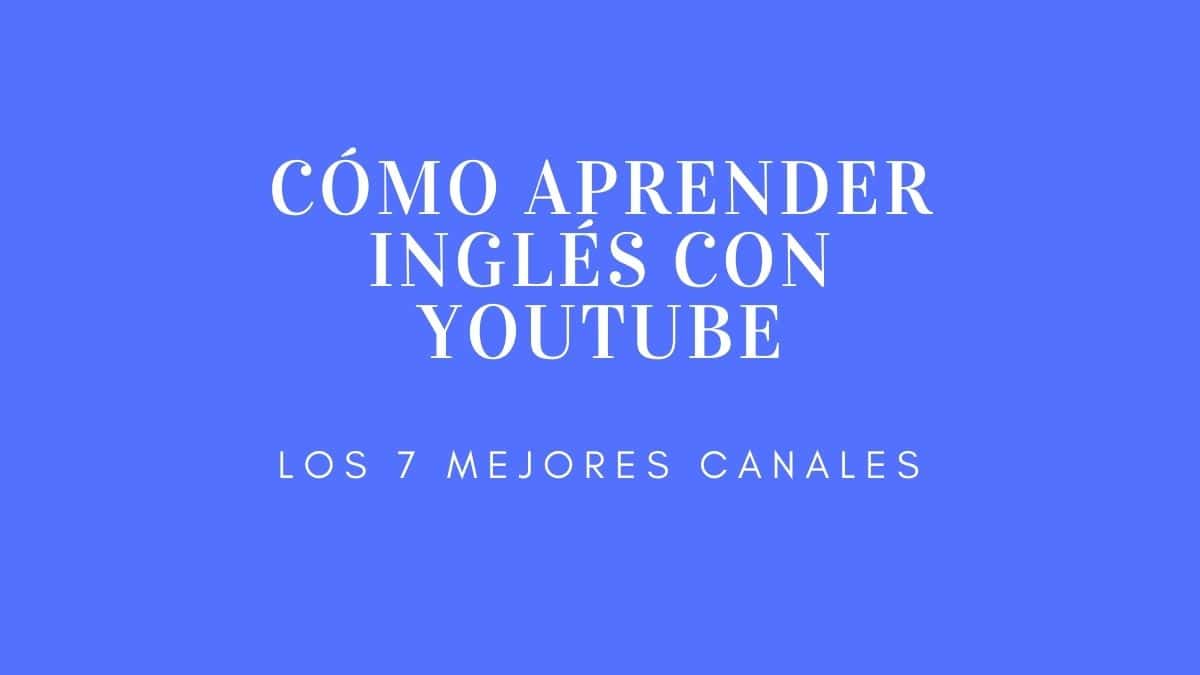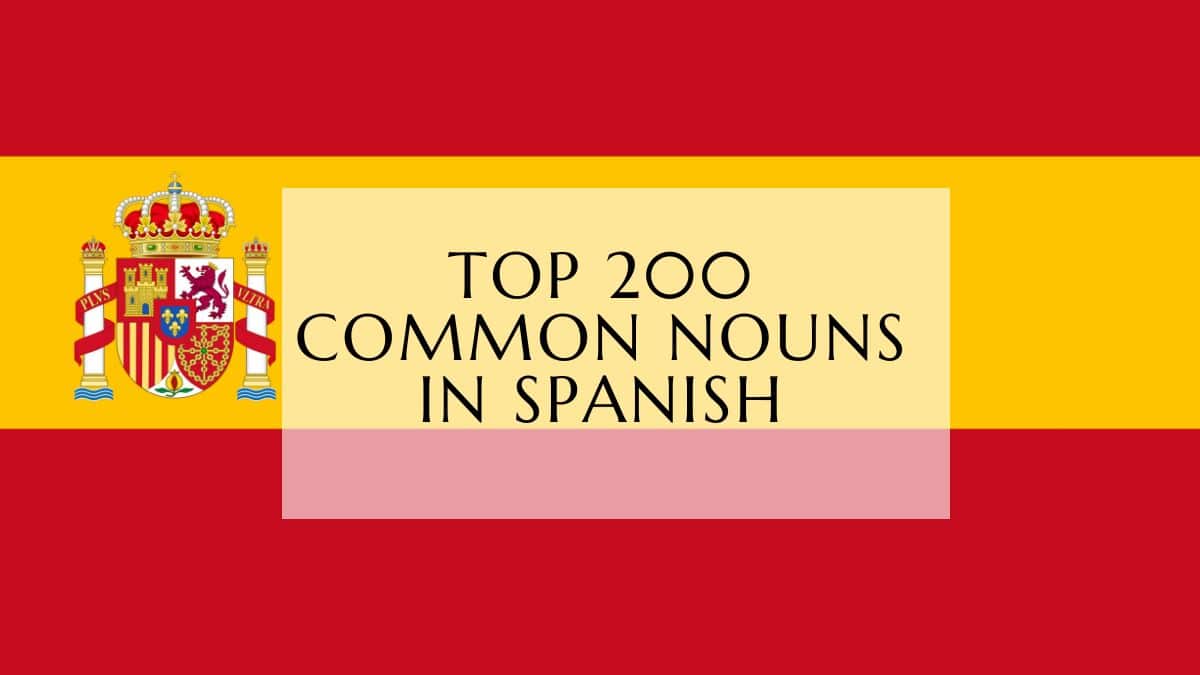In this lesson, we will talk about how to tell the time in Spanish (with audio), it’s one of the skills that we practice daily in our conversations, so we will see how to talk about time, and learn some useful vocab, let’s get started!

How To Tell The Time In Spanish
How to ask what time is it?
Here are the most common ways to ask the time in Spanish:
¿Que hora es? = what time is it?
¿Que hora es ahora? (what time is it now?)
¿Tienes hora? = do you have the time?
¿Sabes qué hora es? (Do you know what time it is?)
¿Podría decirme qué hora es, por favor? (Could you tell me what time it is, please?)
Note 1: You can always add “por favor” (please) in front or at the end of your question.
Note 2: We used the word “hora” (hour) in the plural and the verb “Ser” (to be) conjugated in the first singular.
How to say the time in Spanish
From one o’clock to twelve o’clock:
| English | Spanish |
| it’s one o’clock | Es la una |
| it’s two o’clock | Son las dos |
| it’s three o’clock | Son las tres |
| it’s four o’clock | Son las cuatro |
| it’s five o’clock | Son las cinco |
| it’s six o’clock | Son las seis |
| it’s seven o’clock | Son las siete |
| it’s eight o’clock | Son las ocho |
| it’s nine o’clock | Son las nueve |
| it’s ten o’clock | Son las diez |
| it’s eleven o’clock | Son las once |
| it’s twelve o’clock | Son las doce |
| 12:00 PM | mediodía |
| 12:00 AM | medianoche |
Note: you can practice what you’ve learned here, and learn how to pronounce each of the words in our Memrise course here, don’t know how to use the platform or sign up? we’ve got you covered in this easy-to-follow tutorial here.

Notes:
- Since “hora” is a feminine noun, we used the feminine articles “la” and “las”
- We use the verb “Ser” in the third person singular “es” only to say “Es la una” (it is one o’clock) because “hora” is singular, same with “mediodía” (noon) and “medianoche” (midnight), for the other ones we use the verb “Ser” in the third person plural “Son“
Related: Numbers in Spanish
How to tell the hours and minutes
- 4:15 – Son las cuatro y cuarto.
- 4:20 – Son las cuatro y veinte.
- 4:30 – Son las cuatro e trinta.
- 4:30 – Son las cuatro y media.
- 4:45 – Son las cinco menos cuarto.
- 4:50 – Son las cinco menos diez.
- 4:55 – Son las cinco menos cinco.
- 3:10 = Son las tres y diez.
- 1:10 = Es la una y diez.
- 1:10 pm – es la una y diez de la tarde
- 1:10 pm – es la una y diez de la mañana
Tips:
- To say AM = la mañana. For example: son las diez de la mañana.
- To say PM= la tarde (afternoon) and de la noche (evening). For example: son las cuatro de la tarde. Son las once de la noche.
- When it is between 1 and 5am: de la madrugada. So, 3am = son las tres de la madrugada.

Spanish Time Telling Study Guide
Quiz
Instructions: Answer the following questions in 2-3 sentences each.
- What are two ways to ask “What time is it?” in Spanish?
- How do you say “It’s one o’clock” in Spanish? Why is this construction different from other hours?
- Explain the difference in usage between “la” and “las” when talking about time in Spanish.
- How would you say “4:15” in Spanish?
- How would you say “4:50” in Spanish?
- When is the term “e” used instead of “y” when expressing time in Spanish?
- How do you say “10:00 AM” in Spanish?
- How do you say “1:10 PM” in Spanish?
- What is the Spanish equivalent of “in the afternoon”? When would you use it?
- What term is used for time between 1 AM and 5 AM in Spanish? Provide an example.
Answer Key
- Two ways to ask “What time is it?” in Spanish are: “¿Qué hora es?” and “¿Tienes hora?”
- “It’s one o’clock” in Spanish is “Es la una.” This construction is different because “hora” (hour) is singular in this instance, so the singular form of the verb “ser” (“es”) and the singular article “la” are used.
- “La” is used when referring to a singular feminine noun, while “las” is the plural feminine form. In the context of time, “la” is used before “una” (one) because “hora” is implied and singular, while “las” is used for all other hours because “horas” (hours) is implied and plural.
- “4:15” in Spanish is “Son las cuatro y cuarto.”
- “4:50” in Spanish is “Son las cinco menos diez.”
- “E” is used instead of “y” before words starting with “i” or “hi” for ease of pronunciation. For example, “4:30” is “Son las cuatro e trinta.”
- “10:00 AM” in Spanish is “Son las diez de la mañana.”
- “1:10 PM” in Spanish is “Es la una y diez de la tarde.”
- The Spanish equivalent of “in the afternoon” is “de la tarde.” It is used when specifying a time in the afternoon, such as “Son las dos de la tarde” (It’s 2:00 PM).
- The term “de la madrugada” is used for the time between 1 AM and 5 AM in Spanish. For example, 3 AM is “Son las tres de la madrugada.”
Happy learning!
Oualid Cheddadi is the founder of Lingualid, a platform that inspires independent language learners worldwide, regardless of the language they are learning. The name “Lingualid” is derived from the Portuguese word for “language,” “língua,” and the last three letters of Oualid’s name, “Lid.”



